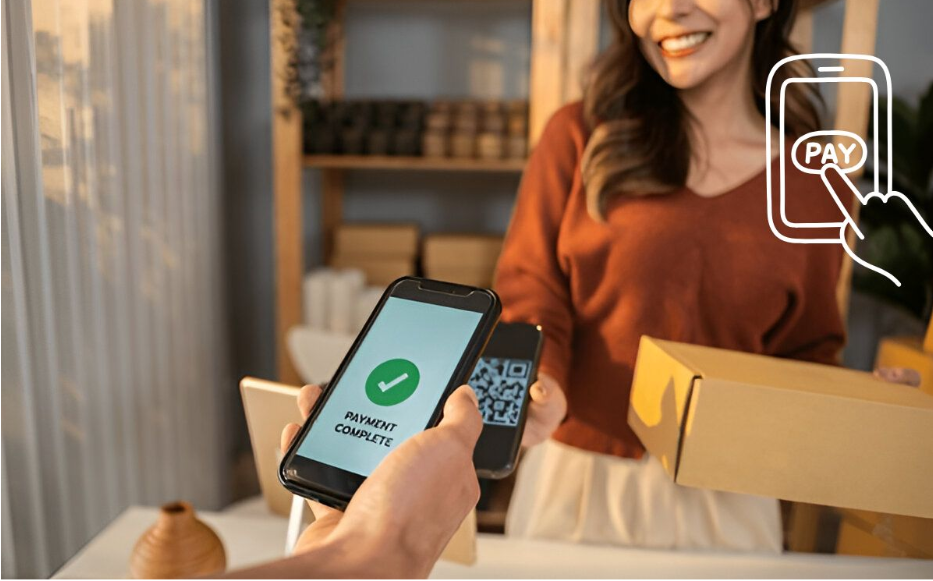Many shifts in Asia’s digital economy have been driven by the rapid adoption of micro payments. As you navigate online platforms, you’ll notice how cashing out small payments are reshaping commerce, from mobile gaming to ride hailing apps. These payments offer convenience, speed, and accessibility, making them a preferred choice for millions. Whether you’re a consumer or a business, understanding this trend helps you stay ahead in a market where digital wallets and QR codes dominate. Explore how micro payments are fueling growth and why they matter to your daily transactions in Asia’s fast-evolving financial landscape.
The Evolution of Digital Payments in Asia
The shift from cash to digital payments in Asia has been rapid, driven by your growing smartphone adoption and internet penetration. Countries like China and India led the charge, with platforms like Alipay and Paytm transforming how you pay for everything from groceries to rides. This evolution reflects your demand for convenience, speed, and security, paving the way for micro-payments to thrive in everyday transactions.
Historical Context
Along with the rise of e-commerce in the early 2000s, digital payments in Asia began as a solution to your limited banking infrastructure. Governments and private players collaborated to create systems like China’s QR code payments or India’s UPI, making it easier for you to transact without cash. These innovations laid the groundwork for today’s micro-payment boom.
Technological Advancements
For seamless micro-payments to become a reality, advancements in mobile technology and fintech APIs were crucial. Your ability to split a bill or pay for a single article online is powered by real-time processing, biometric authentication, and blockchain-based solutions, ensuring transactions are fast and secure.
For instance, platforms like GrabPay and WeChat Pay now let you pay for services in tiny increments, thanks to cloud computing and AI-driven fraud detection. These technologies not only simplify your transactions but also build trust in digital ecosystems, encouraging even smaller, frequent purchases.
The Rise of Micro Payments
It has transformed how you engage with digital services, offering seamless, low-value transactions that fit your on-the-go lifestyle. From buying a single article to tipping content creators, micro payments are reshaping Asia’s digital economy by making financial interactions faster and more accessible.
Definition and Scope
One refers to cashing out small payments, often instant transactions—typically under $10—that let you pay for digital goods, services, or content without committing to larger purchases. In Asia, this includes everything from mobile gaming credits to ride-hailing top-ups, catering to your need for convenience and affordability.
Key Drivers of Adoption
With the proliferation of smartphones and affordable internet, you’re now part of a cashless revolution. Digital wallets, QR codes, and super apps have made micro payments effortless, while younger generations prefer bite-sized spending over traditional payment methods.
Even merchants benefit, as micro payments reduce friction in your purchasing journey, enabling new revenue streams for small businesses and creators. The shift reflects your demand for flexibility, driving platforms to innovate and integrate micro transactions into everyday experiences.
Micro Payments Across Different Countries
Now, you’ll see how micro payments have evolved uniquely across Asia. From China’s mobile-first dominance to Japan’s cashless innovations and South Korea’s seamless integrations, each country offers insights into how Cashing out small payments are reshaping digital economies. These regional differences highlight the adaptability of micro payments to local consumer behaviors and technological infrastructures.
Case Study: China
Countries like China lead the micro payment revolution with platforms like WeChat Pay and Alipay. You’ll notice how these apps dominate daily transactions, from street vendors to online shopping, thanks to QR code simplicity and widespread adoption. Their success stems from a mobile-first culture and government support for digital finance.
Case Study: Japan
The rise of micro payments in Japan reflects its blend of tradition and innovation. You’ll find services like LINE Pay and Rakuten Pay gaining traction, but cash remains preferred for Cashing out small payments. However, the 2020 Olympics accelerated cashless adoption, pushing micro payments into mainstream use.
Another factor driving Japan’s shift is its aging population. You might see how convenience stores and transit systems now integrate micro payment options, catering to younger tech-savvy users while easing older generations into digital transactions. This dual approach ensures gradual but steady growth.
Case Study: South Korea
Around 70% of South Koreans use mobile payment apps like 소액결제 현금화. You’ll observe how these platforms thrive in a high-tech environment, where even public transport and vending machines accept micro payments. The country’s fast internet and smartphone penetration fuel this seamless experience.
Across South Korea, micro payments are also tied to loyalty programs. You’ll appreciate how website reward frequent cashing out small payments with points, encouraging repeat usage. This strategy has cemented micro payments as a staple in everyday life, from coffee shops to online gaming.
Regulatory Challenges and Opportunities
Once again, Asia’s digital economy faces a balancing act between innovation and oversight. As micro-payments surge, regulators grapple with frameworks that foster growth while mitigating risks like fraud and money laundering. For you, this means navigating a patchwork of regional laws, but it also opens doors to streamlined cross-border transactions if harmonized policies emerge. The key lies in adaptive regulations that keep pace with tech advancements without stifling your access to seamless digital payments.
Government Policies
Regulatory policies across Asia vary widely, from China’s strict fintech controls to India’s UPI-driven openness. Your experience with micro-payments depends on local rules—some governments incentivize digital adoption, while others impose limits to protect traditional banking. Staying informed helps you leverage favorable policies, like Singapore’s sandbox approach, which encourages experimentation while safeguarding stability.
Consumer Protection Issues
With micro-payments, convenience often comes with risks—unauthorized transactions, data breaches, or unclear refund policies. You need transparent platforms that prioritize your security, but not all providers meet these standards. Vigilance is your best tool; always check for encryption and dispute resolution mechanisms before committing.
But consumer protection isn’t just about individual caution. Weak enforcement in some markets leaves you vulnerable to predatory practices. Advocating for stronger safeguards, like mandatory escrow services or real-time fraud alerts, can help shape a fairer ecosystem where your transactions stay secure without sacrificing speed.
The Role of Mobile Wallets and Apps
After the rapid adoption of smartphones, mobile wallets and apps have become the backbone of micro-payments in Asia. They allow you to make seamless transactions, from buying groceries to paying for public transport, with just a few taps. These platforms integrate with local banking systems and offer features like QR code payments, peer-to-peer transfers, and loyalty rewards, making them indispensable in your daily financial activities.
Popular Platforms
For everyday transactions, platforms like Alipay, WeChat Pay, and GrabPay dominate the market. You’ll find these apps widely accepted across merchants, from street vendors to shopping malls, ensuring your payments are quick and hassle-free. Their regional dominance stems from localized features, such as support for multiple currencies and partnerships with local businesses, tailored to your needs.
User Experience and Convenience
Against traditional payment methods, mobile wallets offer unmatched speed and simplicity. You no longer need to carry cash or wait for card approvals—just scan a QR code or tap your phone to complete a transaction. The intuitive interfaces and instant notifications keep you in control of your spending.
Understanding the design of these apps reveals why they’re so effective. They prioritize minimal steps, one-click payments, and personalized recommendations, ensuring your experience is smooth. With features like biometric authentication and offline modes, you can transact securely even in low-connectivity areas.
The Future of Micro Payments
Not just a passing trend, micro payments are set to redefine how you transact in Asia’s digital economy. With seamless integration into everyday apps and platforms, these small-value transactions will become even more ubiquitous, driven by demand for convenience and affordability. Expect innovations in blockchain, AI, and contactless tech to further streamline your payment experiences, making micro payments the norm for everything from content subscriptions to ride-hailing.
Emerging Trends
Trends show a shift toward tokenization and decentralized finance (DeFi), enabling you to make micro payments with greater security and lower fees. Social commerce platforms are also adopting “pay-as-you-go” models, letting you tip creators or purchase digital goods effortlessly. As smartphone penetration grows, expect more localized solutions tailored to your spending habits.
Predictions for the Market
Predictions indicate micro payments will dominate Asia’s digital economy by 2030, with transaction volumes doubling annually. You’ll see more businesses adopting “pay-per-use” models, from news articles to gaming skins, as consumers prioritize flexibility. Regulatory support and fintech partnerships will further accelerate adoption, making micro payments indispensable in your daily life.
Hence, the market’s growth hinges on trust and scalability. As more platforms integrate micro payments, you’ll benefit from competitive pricing and personalized offers. Keep an eye on cross-border solutions, which could soon let you make instant micro transactions globally without hefty fees.
Summing up
From above, you can see how 소액결제 현금화are reshaping Asia’s digital economy, driven by mobile adoption, e-commerce growth, and fintech innovation. As you navigate this landscape, you’ll notice how seamless transactions and localized solutions cater to diverse consumer needs. Your understanding of these trends highlights the shift toward convenience and accessibility, empowering businesses and users alike. By recognizing the role of platforms like WeChat Pay and GrabPay, you gain insight into the future of digital finance—where Cashing out small payments transactions fuel large scale economic activity. Stay informed to leverage these opportunities in your own ventures or daily interactions.






